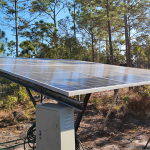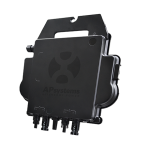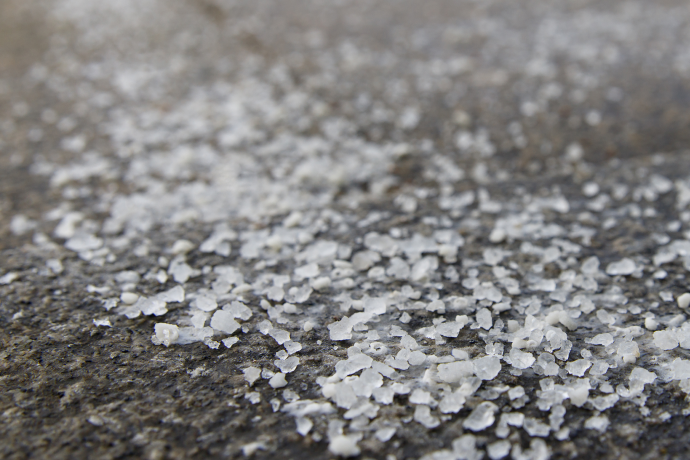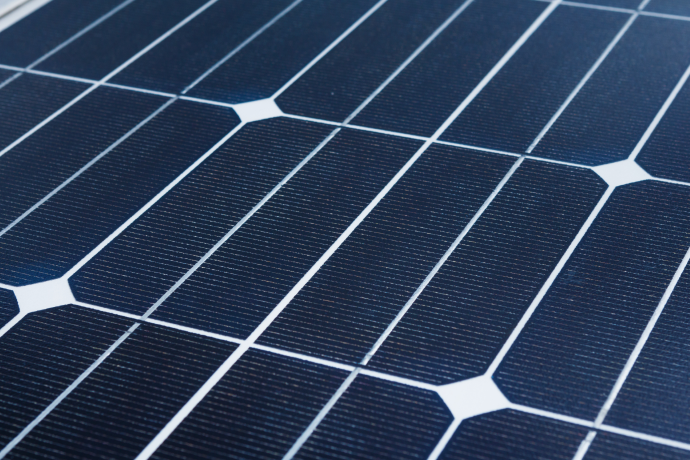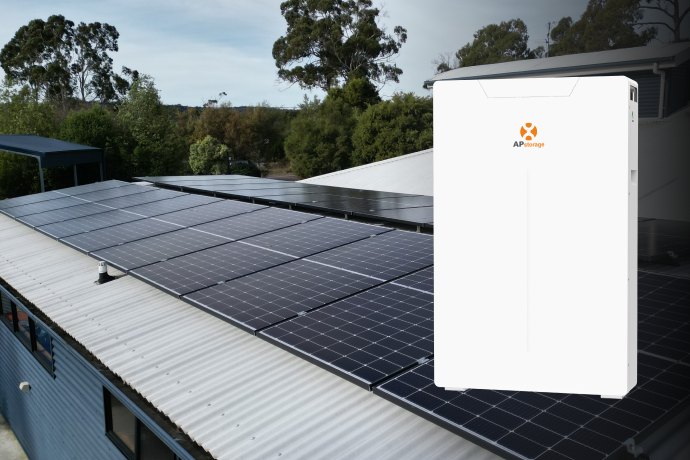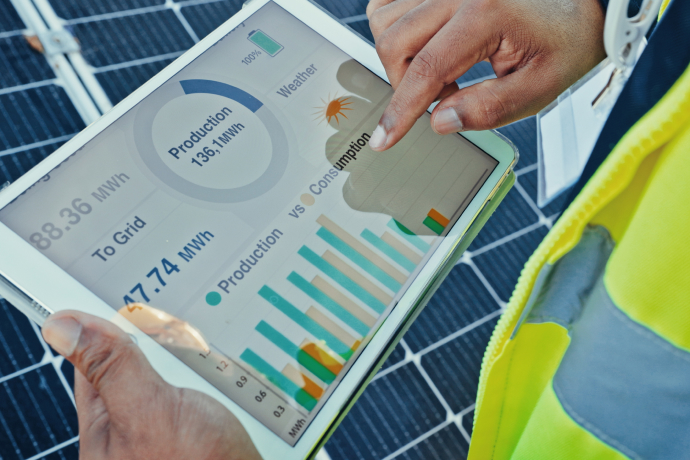Prior to installation, it’s important to understand how solar panels are affected by shade. This can be a particularly important consideration if your property is surrounded by trees or large buildings, casting shade across your roof. Although shade will have a negative impact on your solar production, it doesn’t mean you shouldn’t invest in solar technology full stop. Solar panels still work, however, their production will depend largely on the amount of shade, and if your system has technology aimed to negate these effects. Our guide will explain exactly how shade affects solar panels and the steps you can take to maximise energy production.
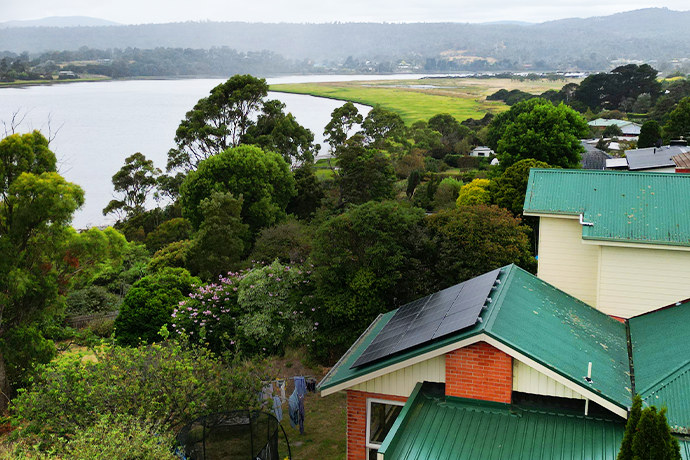
What Are Solar Panels?
Solar panels are devices which convert solar energy into usable electricity for your home. These panels are made from multiple solar cells, usually developed from a semiconductor material such as silicon. This material is then installed inside a metal panel and frame within a glass casing that forms the panel. These panels are generally connected in a series to form strings in order to reach a desired output voltage.
How Do Solar Panels Work?
Before unpacking how shade affects solar panels, it’s vital to understand the process by which solar power is converted into electricity. The following step-by-step guide will guide you through this technology:
- Solar panels absorb sunlight – Solar panels should be installed in a location that maximises their solar output. Locations such as a roof or in large outdoor spaces are perfect because of their proximity to direct sunlight.
- A current is developed – Solar panels operate on a phenomenon known as the photovoltaic (PV) effect. When light energy from the sun hits a solar cell, it causes electrons to come loose from their atoms. These electrons then produce an electrical current, which is captured and transferred to the wires for your home.
- Electrical energy is converted – Although your solar panels are now generating electricity from the sun, it comes in the form of direct current (DC) electricity. This is not the type that generally powers our homes, therefore, we need to switch to alternating current (AC) using inverters. Solar systems have either one inverter for the entire set of panels or individual microinverters which are attached behind the panels.
- Converted electricity powers your home – Once your solar energy is converted from DC to AC, it then runs through your electrical panel and is used to power your home.
Do Solar Panels Need Direct Sunlight?
Solar panels need sunlight to convert as much energy into electricity for our homes. For solar panels to work at their best, they need as much direct sunlight as possible. Generally, four to five hours of sunlight per day should allow solar panels to work at their maximum. Although panels can work without direct sunlight, this will result in a drop in performance compared to their optimal level. This is because indirect sunlight is less intense than the sunlight solar panels need for their maximum output. While both direct and indirect sunlight carry photons needed to create electricity, direct sunlight carries much more energy. For instance, on a cloudy day the sunlight is scattered and less intense, meaning that while your solar panels will still produce electricity, it will be at a reduced rate; approximately 10 to 25% less. You should refer to your panel installer if you have any further queries related to solar. Let’s now take a look at how a form of indirect sunlight in shade, can affect your solar panel performance, and the steps you can do to maximise your energy output.
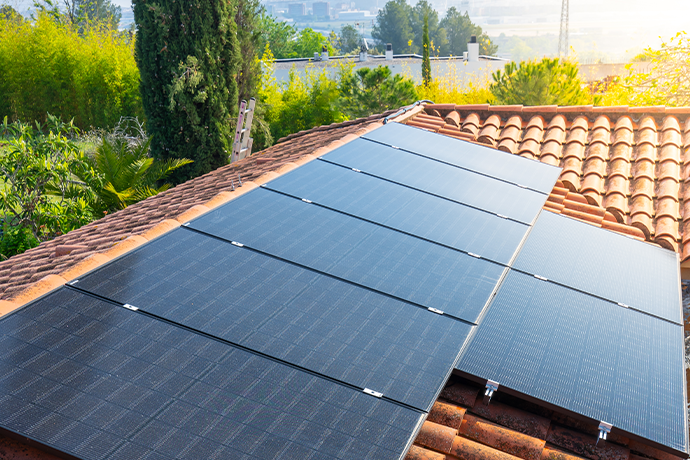
What Causes Solar Panel Shading?
Anything that blocks out sunlight from reaching our solar panels can be referred to as shade. Shading can come in a range of forms, from natural phenomena to physical structures. The following is a list of common forms of shading:
- Trees – Potentially the most common form of shading, having a few trees surrounding your property can potentially block out the sun. Important to mention that shading from trees might not be a year-round factor, as during the winter months, they lose their leaves, which may allow the sun to pass through.
- Nearby buildings – If your property is next to larger houses, apartment complexes, or even other buildings such as parking lots, power lines, or warehouses, this can block out your roof from sunlight.
- Rooftop structures – Other potential catalysts for shade include other variables within your own roof. A chimney, roof peak, or satellite dish all have the potential to create shade at specific times on your solar panels.
- Debris – Dust or dirt that has accumulated throughout the solar panel’s lifetime can also block out direct sunlight.
- Weather conditions – Cloudy days will block out important sunlight from reaching our solar panels. It can extend to more extreme meteorological events, such as heavy rain or snow, which can reduce the panel’s exposure to sunlight.
How Shading Affects Solar Panels
Because solar panels need the sun to initiate the PV effect to create electricity, any shading will negatively impact this process by blocking out valuable sunlight, thus reducing their output. The way in which shading directly affects your panels depends largely on your setup. Traditional panels are significantly affected by shade, because each panel is wired all together in a string setup. Because they are all connected together, shading just one panel can result in a dramatic drop in performance across the entire system. In a string setup, the output is always dependent on the lowest performing panel, even if all the other panels are experiencing perfect sunlight. A string setup operates like a row of Christmas lights. If one of the lights goes out, it will cause the rest of the lights to go dimmer. Therefore, traditional string panels are particularly inept at handling shading. Even if you blocked out just one cell in a panel, the entire system could see its output reduced by as much as 50%.
Fortunately, all TSS panels are fitted with a technology called microinverters which can handle the effects of shading much more effectively. Unlike string inverters which operate together, microinverters allow each panel to operate independently from each other to send their own electricity to the home directly. This means that if you shaded one panel, only it’s affected, and the rest of the panels can operate at full capacity. This is the biggest advantage of microinverters; the efficiency of the overall system is divided, not centralised. Microinverters are therefore much more adept at handling partial shading than traditional string inverters. Although if a panel is partially shaded it will still experience a drop in power output.
Your exact energy loss when under shade using your microinverter panels will depend largely on the following factors:
- Duration of shade – Solar panels that are under shade for a longer period of time will experience larger drops in electricity production. This duration will change depending on the time of year. In summer, the sun appears higher in the sky with more direct sunlight, moving lower as we move into winter which affects the duration of shade.
- Area of shade – If your panels are shaded by more than 75% or completely shaded, then your solar panels will not work adequately to power your home, because they have no direct contact with sunlight. With modern technology, partial shading can still produce solar energy. Overall, the greater the shaded region, the lower the energy production.
- Type of shade – A shade with greater density, such as a building or trees, will have a more substantial negative effect on a panel’s production than a lighter shade from a small cloud.
Don’t worry, panels can still operate when affected by shade. The solar industry has heavily benefited from the introduction of a range of new technologies to combat these negative effects.
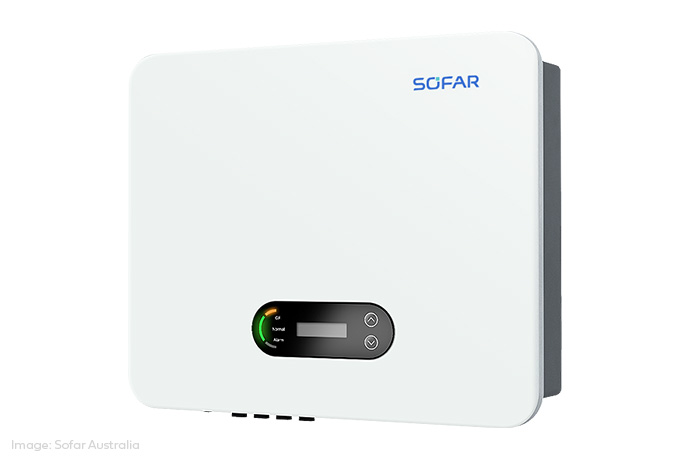
How to Maximise Solar Efficiency in Shade
If you’re thinking of installing solar panels and you’re struggling with shade, you’ll want to know exactly how you can maximise your solar production and return on investment (ROI) under these circumstances. In addition to the previously mentioned microinverters, the following are the various measures you could take to be prepared:
Sit your solar panel away from direct shading
One of the most obvious steps for counteracting shade is to choose the optimal position where you get the most sunlight possible. When considering where to place your panels, it’s important to consider all seasons of the year. Depending on the time of year, the sun will be in different positions. For instance, your backyard tree may not cast shadows in autumn, but it could during the summer. Your solar installer will be able to consult with you on your best position when considering these factors.
Use Maximum Power Point Tracking (MPPT)
If you have considerable shade across your roof that you can’t avoid, then investing in solar panels with MPPT is one of the best decisions you could make. Essentially, MPPT is a technology that dynamically adjusts the total voltage to keep the panel within the inverter’s optimal range, even when some sections are underperforming in shade.
Use bypass diodes
When your panels are experiencing partial shading, bypass diodes are another great way to minimise the negative effects. Prior to bypass diodes, it didn’t matter where the shade was located; your total power output would never be greater than the shaded section. These new diodes are devices that are designed so the current can bypass the shaded area. This ensures the performance of the entire system is not hurt by the reduced power loss in the shaded section. Most modern solar panels will contain bypass diodes, but we highly recommend checking with your installer if you are potentially impacted by shade.
Choose the right solar panel for you
Making the right decision for solar panel type will be integral for maximising your efficiency. The following is an overview of the best types for combating shaded areas.
- Monocrystalline panels – Monocrystalline solar panels are a type of PV panel, developed from a single, continuous, silicon structure. Because of this single, silicon crystal structure, it results in higher electron mobility and therefore, higher efficiency at upwards of 20 to 22%. This is considerably more than other common types of panels, such as the polycrystalline variant (15 to 17%). This means monocrystalline panels can produce the same electricity output as polycrystalline, in a smaller sized panel. If space is an issue on your roof due to shade, the monocrystalline is a great choice because its high-efficiency panels pack high electricity outputs into a smaller size. For more information on the benefits of monocrystalline vs polycrystalline, please refer to our article here – (mono vs poly article not up yet but good to link when done)
- Thin-film solar panels – Thin-film solar panels use layers of light-absorbing materials instead of your traditional silicon crystal. These light-absorbing materials are then applied to a layer of glass, metal or plastic to make the panels incredibly lightweight and flexible. This flexibility allows the thin-film to be applied to various surfaces, allowing you to produce solar energy in unconventional places where traditional panels won’t. For instance, if you can only get optimal sunlight from a curved or uneven surface, the thin-film panels are a great option.
- Ground-mounted solar panels – If your roof is too affected by shade, then another great option would be to install ground-mounted solar panels. If you have plenty of land or backyard space basking in the sun, then placing panels on the ground eliminates the restrictions of your roof. This is a particularly great option if you have an extensive property, although it can be more challenging in more residential areas with more valuable backyard space.
Removing trees or shade
If trees are causing your shade, then regularly trimming or even cutting down your trees would be a potential option. This could also extend to households thinking of planting trees who already have solar installed, to be mindful of the size of the tree relative to your panels and the sun.
Cleaning solar panels
One of the best ways to improve, not just the lifespan of your panels, but their efficiency, is by regularly cleaning. Depending on your surrounding conditions, dust and dirt can accumulate on your panels. Dust particles, in particular, can scatter and absorb the incoming sunlight and prevent it from being absorbed by your panels. Regular cleaning is the most effective way to counteract this buildup, which we recommend usually once every 6 to 12 months.
Investing in a home battery system
A home battery system is an effective way to store any surplus electricity generated by your solar panels for a later time. Therefore, when your solar panels are shaded, you can instead use your saved surplus electricity generated when the sun was at the best position.
Solar panels can continue to work when affected by shade and continue to produce a significant amount of energy, albeit at a reduced rate. Modern solar panels are more advanced than ever, with technologies that allow you to maximise your energy production. Using micro-inverters, cleaning solar panels or investing in a home battery system are all useful strategies for combating shade. Be sure to contact the team at TSS, who can install a solar system that can work around any shade concerns.

